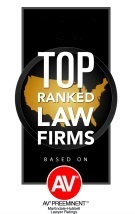Return to Work Checklist
Authors: Daniel E. Gardenswartz and Andrew C. Myers
Updated: 5/5/2020
While we do not yet know precisely when or under what conditions the current “stay at home” orders will be lifted, the eventual return to work will undoubtedly require substantial amounts of advance planning and compliance with a new and dynamic work environment. We suggest that those plans should start now, and to help guide and promote discussions within your organization regarding your employees anticipated returning to work, SWSS has developed a high-level “checklist” of issues for your consideration.
This checklist does not identify every possible question/consideration applicable to a given business, nor can we be sure of what regulatory framework will ultimately be in place once the current restrictions are gradually lifted. Nevertheless, we hope that the below checklist will serve as a useful tool to assist your organization with the substantial issues and advance planning that will need to be addressed in the near future.
Preparing For The Return: Be prepared to inform employees of the steps you have taken to prepare their workplace.
- Review workplace layout (including people flow, capacity limits, and individual workspaces) and scheduling (i.e. staggered shifts/breaks) to ensure proper social distancing can be observed, and continued remote working where appropriate.
- Identify third party vendors available to conduct a deep clean of your facility before employees return to work and on a reoccurring basis thereafter.
- Obtain cleaning supplies that will be needed by employees upon returning to work.
- Identify necessary Personal Protective Equipment (“PPE”) (gloves, goggles, face shields, face masks, and respiratory protection, when appropriate) which could be requested by employees and locate possible third-party vendors. Employers should select a combination of PPE that protects workers specific to their workplace.
- Handwashing/disinfecting posters in common work areas and restrooms, including policies re disinfecting common work areas after use.
- Identification of local/jurisdiction sources for key information regarding COVID-19 regulations and trends.
- Identify new Federal, State, or local laws/ordinances applicable to your organization – Families First Coronavirus Response Act, Emergency Family & Medical Leave Expansion Act, Emergency Paid Sick Leave Act, The Cares Act. For employers located in San Diego, please review the “Safe Opening Protocol” which was approved by the San Diego County Board of Supervisors on May 5th.
- Review, update, or be prepared to address changes to workplace policies and procedures. Policies should promote flexibility and encourage sick employees to stay home without fear of reprisals.
- Identify whether any employee and/or visitor screening/testing will be required or necessary.
- Consolidate return to work notices/handouts to be provided to employees upon their return to work. Several informative handouts can be downloaded here.
- Plan for the potential that employees may refuse to return to work, or for high risk employees to seek further accommodations, and other risk management issues.
- Preparation of FAQ designed to address anticipated questions from employees upon their return to work.
Upon Their Return: Empower employees with critical information and emphasize personal responsibility for implementing personal-level actions. Encourage self-monitoring!
- Educate employees on available employee assistance services, share information on steps which can be taken to protect themselves, and provide employees with informative materials from creditable governmental agencies.
- Educate employee’s regarding key symptoms. Ensure employees know the signs and symptoms of COVID-19 and what to do if they are symptomatic.
- Preparation of Return to Work Protocol which identifies proper employee etiquette, regular cleaning protocols, isolation protocols, and self-monitoring procedures (several self-monitoring apps are available, one of which can be downloaded here).
- Implement necessary workplace controls – Engineering controls, administrative controls, safe work practices, and PPE.
- Maintain sufficient cleaning and PPE products for continued use by employees.
- Ensure cleaning/employee etiquette protocols comply with all applicable wage/hour laws.
- Share cleaning/employee etiquette protocols with staffing agencies and related vendors.
- Identify essential employees, business functions, and other critical inputs required to maintain critical business operations (raw materials, suppliers, subcontractors, etc.) How will you operate if/when absenteeism spikes?
- Prepare policies regarding the handling of visitors and deliveries to the work place to ensure proper social distancing.
- Prohibited disability related inquires/medical examinations vs. proper COVID-related inquires.
- Develop emergency/response plan if future outbreak occurs within your organization – i.e. Infections Disease Preparedness Plan and Response Plan. How will the company handle a second wave?
- Ensure all current and new posting requirements are implemented as required by the applicable jurisdictions.


